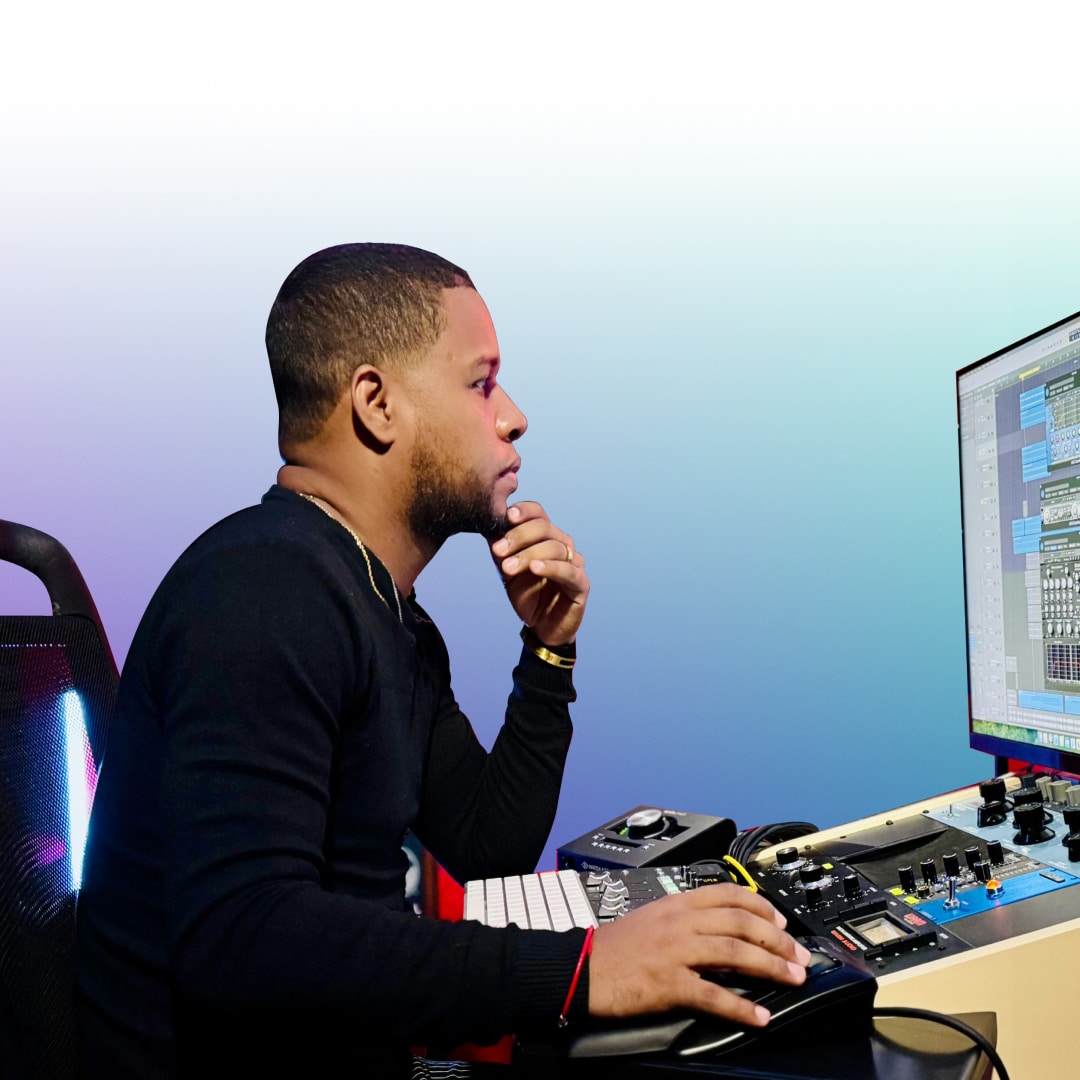In today’s digital age, music distribution is an essential component for any artist looking to share their music with the world. Platforms like Tunecore and Distrokid serve as bridges between musicians and their audiences, enabling the distribution of tracks across various digital stores and streaming services. These services handle the logistics of uploading music, ensuring that it reaches major platforms like Spotify, Apple Music, and others. Each service offers distinct features and pricing models, which can significantly impact an artist’s ability to monetize their work and gain exposure.
Selecting the right music distribution service is critical for artists as it affects not just their earnings but also the reach and visibility of their music. Tunecore and Distrokid, as leading platforms in digital music distribution, cater to different needs and artist profiles. While both platforms aim to provide extensive distribution channels, their approaches and benefits vary. An informed choice can help artists maximize their potential earnings, maintain control over their music rights, and optimize the distribution process to suit their career goals. Understanding the nuances between Tunecore and Distrokid will aid in making an educated decision that aligns with an artist’s strategic ambitions in the music industry.
Pricing Models: Pay-Per-Release vs. Subscription
Tunecore’s Pay-Per-Release Model
Tunecore operates on a pay-per-release pricing structure, which requires artists to pay a fee each time they wish to distribute a new single or album. This model can be particularly advantageous for artists who release music infrequently or those who prefer to invest more selectively in specific projects. The upfront costs, while potentially higher per release compared to subscription models, allow for straightforward budgeting without ongoing financial commitments. This model empowers artists by providing clear cost expectations for each distribution cycle, ensuring they can plan their releases without concerns about recurring charges.
Distrokid’s Subscription Model
Contrastingly, Distrokid offers a subscription-based approach, where artists pay an annual fee to upload as much music as they desire throughout the year. This model is highly beneficial for prolific creators who release tracks regularly, providing them with a cost-effective solution for extensive song distribution. The flat-rate subscription eliminates per-release charges, making it easier for artists to manage their finances and focus on creative output rather than distribution costs. Distrokid’s model encourages continuous engagement with the platform and can significantly reduce the marginal cost of distributing additional music.
Cost Comparison and Value for Money
When evaluating Tunecore and Distrokid’s pricing models, artists must consider their music release frequency and financial strategy. Tunecore’s per-release model might result in higher costs for active musicians who frequently put out new content. In contrast, Distrokid’s subscription could represent substantial savings for these artists. However, for those releasing sporadically, Tunecore might be more cost-effective as it avoids the sunk cost of a yearly subscription fee. Each platform’s model offers different value propositions based on the artist’s release schedule and career phase.
Determining which pricing model suits an artist’s needs depends on several factors, including release frequency, budget constraints, and long-term career goals. If an artist plans to release multiple albums or singles per year, Distrokid’s subscription service might offer the flexibility and economic advantage necessary for such a prolific output. Conversely, artists who release music less frequently may find Tunecore’s pay-per-release model more aligned with their financial and promotional strategies. Ultimately, the choice between Tunecore and Distrokid should reflect the artist’s operational preferences and financial circumstances.
Revenue Splits and Earnings
Tunecore’s Revenue Split and Additional Fees
Tunecore prides itself on allowing artists to keep 100% of their royalties, positioning itself distinctively in the music distribution comparison. This means that artists receive all the earnings from their streams and sales, paying only the initial distribution fee per album or single. However, it’s essential to account for additional costs that may occur, such as charges for optional services including music video distribution, social media promotion, and publishing administration. These services, while beneficial for enhancing visibility and managing rights, can add to the overall expense, affecting the net earnings from music releases.
Distrokid’s Revenue Split and Hidden Costs
Distrokid also promotes a full royalty model, where artists retain 100% of their earnings from distributed music. This clear advantage is complemented by Distrokid’s straightforward subscription fee, which covers all basic distribution needs without additional per-release charges. However, artists should be aware of potential hidden costs associated with higher-tier subscription plans that offer enhanced features like synchronized lyrics or daily sales statistics. These features, while potentially valuable for marketing and strategic planning, can increase the annual cost, impacting the overall financial effectiveness of using the platform.
Understanding Royalties and Payouts
Navigating the complexities of royalties and payouts is crucial for artists using platforms like Tunecore and Distrokid. Both services facilitate direct deposit of earnings into an artist’s account, bypassing traditional record labels. This direct-to-artist payment model simplifies the financial landscape but requires artists to be proactive in managing their accounts and understanding the timing of payouts. Regular monitoring of accounts and sales reports is essential to ensure that artists are fully aware of their earnings and can plan their financial strategies accordingly.
Impact on Long-Term Earnings
The decision to select either Tunecore or Distrokid as a music distribution service can significantly influence an artist’s financial outlook over time. Each platform offers distinct revenue models that cater to different types of artists and production frequencies. Here is a look into how these choices might impact long-term earnings:
- Assessment of Career Trajectory: Artists need to consider their release frequency and career plans when choosing a platform. For those planning a high volume of releases, Distrokid’s model may offer better financial sense, whereas Tunecore could be more suitable for artists with fewer releases.
- Long-Term Financial Planning: The choice between Tunecore and Distrokid should align with the artist’s long-term financial goals. Tunecore might be preferable for those with significant initial funding and less frequent releases, while Distrokid suits artists aiming for continual growth and regular content delivery.
- Opportunities for Future Growth: It’s crucial for artists to think beyond immediate earnings and consider each platform’s capacity to support their future growth. This includes evaluating how each service can aid in expanding their reach and effectively managing royalties over an extended period.
Choosing the right music distribution platform is more than just a matter of current financial convenience; it’s about aligning with an artist’s broader career aspirations and financial objectives. The implications of this decision will resonate throughout their career, affecting not only immediate income but also long-term financial sustainability and growth.
Distribution Reach and Platform Integration
Tunecore’s Global Distribution Network
Tunecore has established itself as a formidable player in digital music distribution, boasting a wide-reaching global network that connects artists to over 150 digital stores and streaming services worldwide. This extensive reach is crucial for artists aiming to maximize their visibility across diverse markets. Tunecore’s robust distribution channels not only facilitate access to major platforms like Apple Music and Spotify but also niche markets that may be less penetrated by competitors. For artists looking to cast a wide net and tap into international audiences, Tunecore’s expansive network offers a strategic advantage in the best music distribution service race.
Distrokid’s Speed and Efficiency in Distribution
Distrokid sets itself apart with its commitment to speed and efficiency, enabling artists to get their music live on platforms remarkably quickly. Often, songs distributed through Distrokid appear on streaming services within hours, a significant edge for artists eager to maintain momentum in the fast-paced music industry. This rapid turnaround can be particularly beneficial during album launches or promotional campaigns where timing plays a critical role. Moreover, Distrokid’s streamlined upload and approval process ensures that artists can focus more on their music and less on the logistical hurdles of digital distribution music.
Integration with Major Digital Stores
Both Tunecore and Distrokid excel in integrating with major digital stores, ensuring that artists’ music is available wherever listeners might search for it. This integration encompasses not only streaming services like Spotify and Apple Music but also platforms like TikTok and YouTube, enhancing the opportunities for songs to go viral and capture new audiences. Effective integration with these digital outlets is pivotal for artists to leverage their presence and ensure their tracks are readily accessible, which is a core aspect of any music distribution deal.
Features and Tools for Artists
Automated Royalty Collection
The ability to automatically collect royalties is a significant advantage offered by both Tunecore and Distrokid, enhancing the efficiency of managing financial returns from music streams and sales. Tunecore provides a detailed financial dashboard that allows artists to track their earnings, adjust their marketing strategies, and plan future releases based on precise, real-time data. Similarly, Distrokid offers a seamless collection mechanism that ensures artists receive their dues without the need for manual tracking, greatly simplifying the royalty management process. This feature is vital for artists to maintain financial oversight and maximize their earnings from digital music distribution.
Streaming Analytics and Reporting
Understanding audience behavior and consumption patterns is crucial for tailoring marketing efforts and planning tours or releases. Distrokid excels in providing comprehensive streaming analytics, offering artists a granular view of where their music is being played and by whom. This data is invaluable for making informed decisions about which markets to target and what kind of content resonates with their audience. Tunecore also offers robust reporting tools that help artists visualize their music’s performance across different platforms, enabling strategic adjustments to enhance their reach and engagement in the music distribution landscape.
Artist Support and Additional Revenue Streams
Artist support and the potential to access additional revenue streams are crucial for musicians navigating the complexities of the digital music landscape. Tunecore and Distrokid each offer distinct tools and services that can significantly influence an artist’s ability to maximize their reach and diversify their income sources. Here’s a closer look at how each platform supports artists beyond mere distribution:
- Sync Licensing Opportunities: Tunecore provides artists with opportunities to license their music for movies, television shows, commercials, and more. This not only broadens their audience but also opens up a lucrative revenue stream separate from traditional music sales and streaming.
- Social Media Promotion Tools: Artists using Tunecore benefit from promotional tools that enhance their visibility on social media platforms. This includes services that help optimize their music’s presentation and reach on platforms like Facebook and Instagram, which are vital for modern music marketing.
- Physical Music Distribution: Unlike many purely digital services, Tunecore offers the option for physical distribution, which includes the production and distribution of vinyl, CDs, and other physical formats. This service caters to markets where physical media still holds a significant place and can be particularly beneficial for niche or collector markets.
- Hyper-Follow Pages: Distrokid’s hyper-follow pages provide a one-stop link for fans to access all streaming platforms where the artist’s music is available. This not only simplifies the listening experience for fans but also increases the likelihood of conversions from listens to follows, boosting streaming numbers.
- Streaming Service Direction: Distrokid enhances an artist’s ability to direct listeners to their preferred streaming service. This focused direction can help artists concentrate their fanbase’s streaming activities, potentially increasing revenue from specific platforms where they may have better royalty arrangements or promotional support.
The incorporation of these features into an artist’s distribution strategy can significantly affect their promotional reach and financial success. Such tools not only facilitate broader distribution but also ensure that artists can engage with their audiences in more dynamic and financially beneficial ways.
Unique Tools Offered by Each Platform
Tunecore and Distrokid each bring unique tools to the table that can significantly influence an artist’s decision based on their specific needs. Tunecore’s strong suit includes offering music publishing administration that helps artists collect royalties globally from performances, broadcasts, and sync placements, a critical service for those looking to maximize every revenue avenue. On the other hand, Distrokid introduces features like splits, which allow artists to automatically share earnings with collaborators directly through the platform, ensuring transparency and efficiency in music distribution financial dealings.
Pros and Cons of Tunecore and Distrokid
Tunecore’s Strengths and Weaknesses
Tunecore is often praised for its comprehensive approach to music distribution services, offering artists a robust suite of tools that extend beyond digital platforms into physical media and sync opportunities. One of the key Tunecore advantages is its ability to let artists retain 100% of their royalties from digital sales, which can be incredibly beneficial for maintaining financial autonomy. Additionally, its global distribution network ensures artists’ music reaches listeners across a multitude of platforms worldwide. However, the pay-per-release model might be less appealing for artists planning frequent releases due to the cumulative costs, which could deter those on a limited budget.
Distrokid’s Advantages and Disadvantages
Conversely, Distrokid benefits from a subscription model that is particularly advantageous for prolific artists. The ability to upload unlimited tracks for a single annual fee makes it the best distribution for music creators who produce content continuously. This model simplifies the financial aspect of distribution, allowing artists to focus more on creation than costs. Distrokid’s rapid upload times ensure that music hits the market quickly, a crucial factor in today’s fast-paced consumption cycles. However, its services are predominantly digital, which may not satisfy artists seeking physical distribution or broader promotional services.
The choice between Tunecore vs. Distrokid largely depends on an artist’s specific needs and career goals. Tunecore’s extensive reach and service diversity may attract artists looking for a comprehensive platform that addresses all aspects of music promotion and distribution. In contrast, Distrokid may appeal more to those who value speed and cost-efficiency over physical distribution channels.
Artists using Tunecore might find the upfront costs a barrier, especially when experimenting with different genres or styles that require multiple releases. A solution could be to strategically plan releases to maximize exposure while managing costs effectively. For Distrokid users, the challenge might lie in the limited physical distribution, which can be mitigated by partnering with other services that offer physical media solutions, thus combining the strengths of both platforms.









